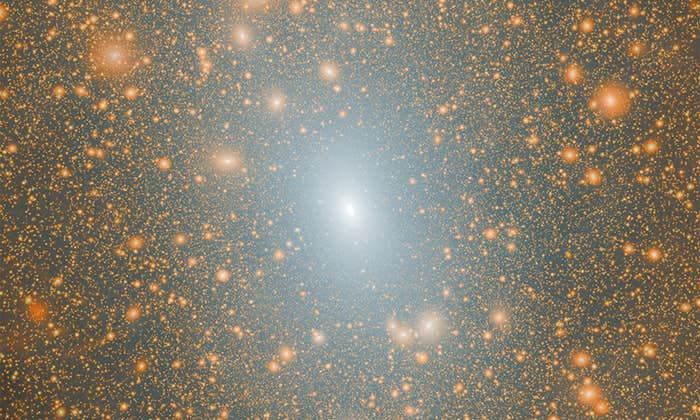Nestled amidst leaf litter and decaying stumps on forest floors around the world, the collared earthstar (Geastrum triplex) can be hard to spot—that is, until the mushroom’s bulbous core wheezes a fleeting puff of spores.
As a member of a group of fungi called Gasteromycetes, or “stomach fungi,” the collared earthstar begins its life cycle as a hardened bulb of just a few centimeters, anchored underground by a network of tiny fungal threads called mycelia. In the late summer and early fall, earthstars reach maturity and bloom into their characteristic, flower-like shape as the thicker outer tissue (the exoperidium) splits into an array of some four to eight points, much like a rind falling off an orange. Once fully mature, the average earthstar resembles a drab clementine perched atop a star-shaped saucer.
When triggered by a falling raindrop or, in this case, a quick poke from photographer Alex Hyde, earthstars burst and expel billions of spores from their hollow internal core. This six-armed earthstar, which Hyde photographed in England’s Peak District National Park, was about the size of an apple and situated among other earthstars on a damp, shaded patch of woodland floor. The earthstar’s fruiting body can persist for months at a time, which makes it easier to map the fungi’s locations and plan for photo shoots like this one when the fungi reappear in the spring.
When triggered by a falling raindrop earthstars burst and expel billions of spores.
Perhaps owing to their ability to disperse billions of spores with a single puff, earthstar fungi of the Geastraceae family are found throughout the world, from the damp forests of the United Kingdom to Hawaii’s coastal coconut groves. Their use in traditional medicine is similarly widespread: The earthstar is among a myriad of fungi used by Chinese medical practitioners to treat such ailments as lung and throat irritation.
Like other puffballs—fungi with a spore-releasing, ball-shaped body—earthstar fruits and their spores have also been utilized for cultural purposes among many Indigenous tribes in the Americas. Blackfeet Nation tradition holds that the constellations of ka-ka-toos that litter the forest floors of their ancestral grounds in the Upper Great Lakes region represent fallen stars that tumbled to Earth due to supernatural forces. Tribal members have used the hollowed, dried out shells of earthstars and other puffballs to make baby rattles, to provide inspiration for tipi designs, and to ward off unwelcome spirits.
Western scientists have likewise expressed their reverence for the diminutive earthstar. British mycologist C.B. Plowright wrote in the 19th century that spotting one would “gladden the heart of the most lethargic fungologist.”
Yet as extraordinary as the earthstar appears on the surface, it’s the work it does underground that is most enchanting for the trees and other plants towering above. By weaving its web of mycelia with the roots of nearby plants, the earthstar exchanges mineral nutrients, water, and food in what some scientists refer to as an “underground handshake,” a system of barter that helps to sustain the ecosystems it calls home. ![]()
This story originally appeared in bioGraphic, an independent magazine about nature and regeneration powered by the California Academy of Sciences.




























